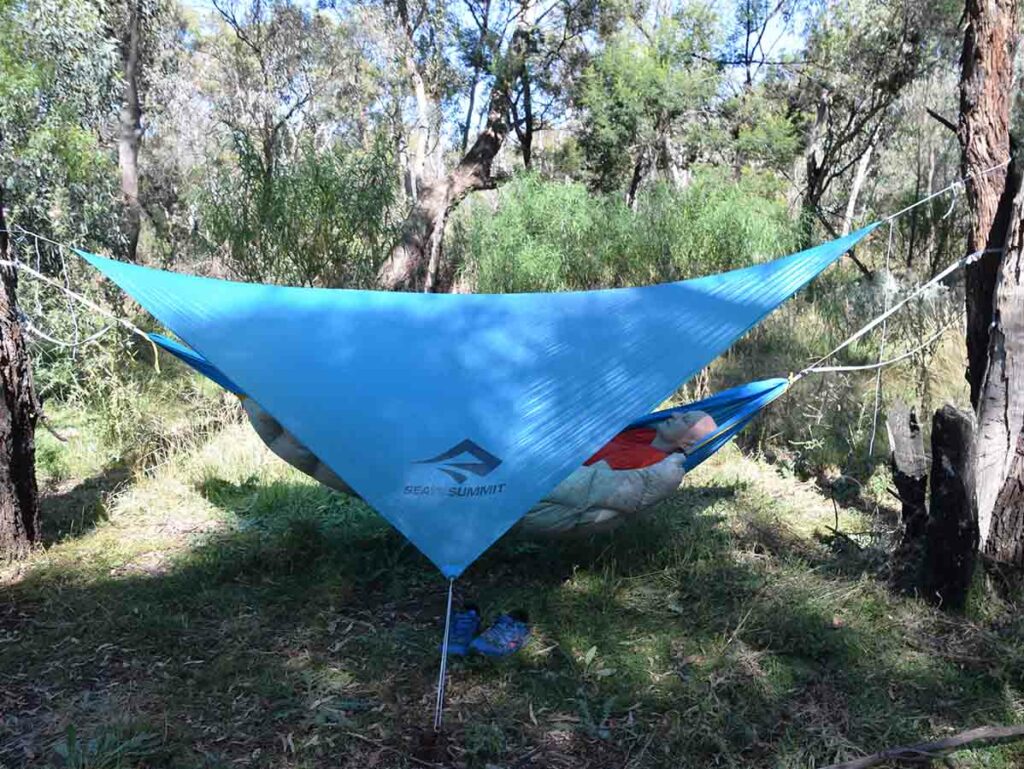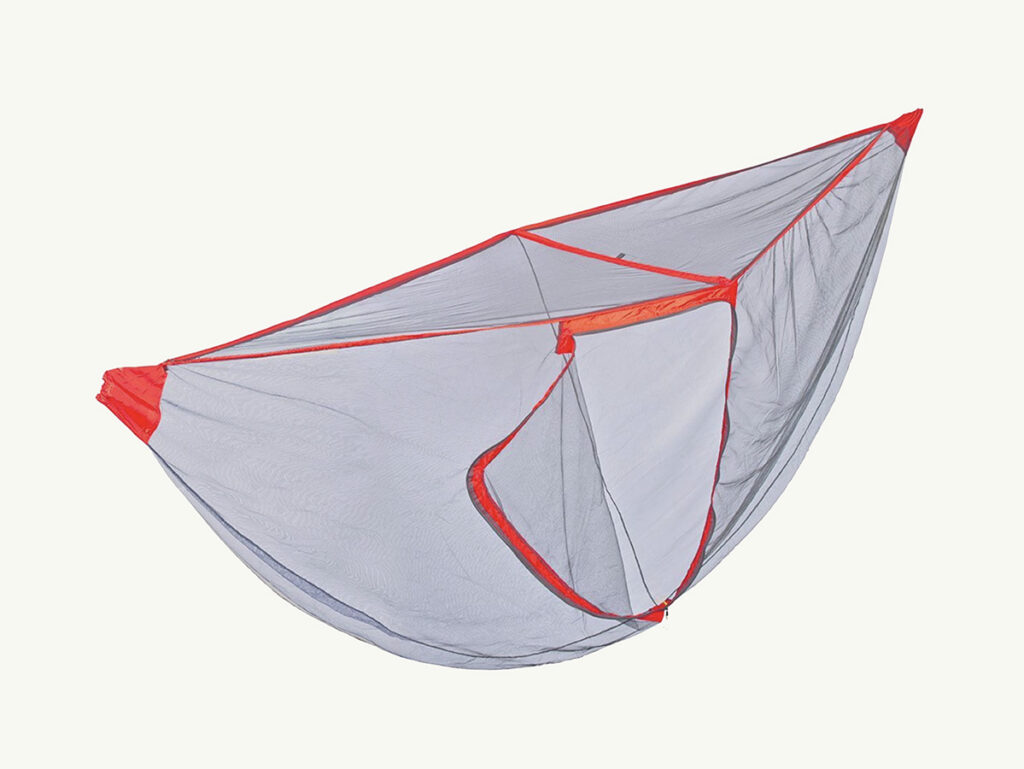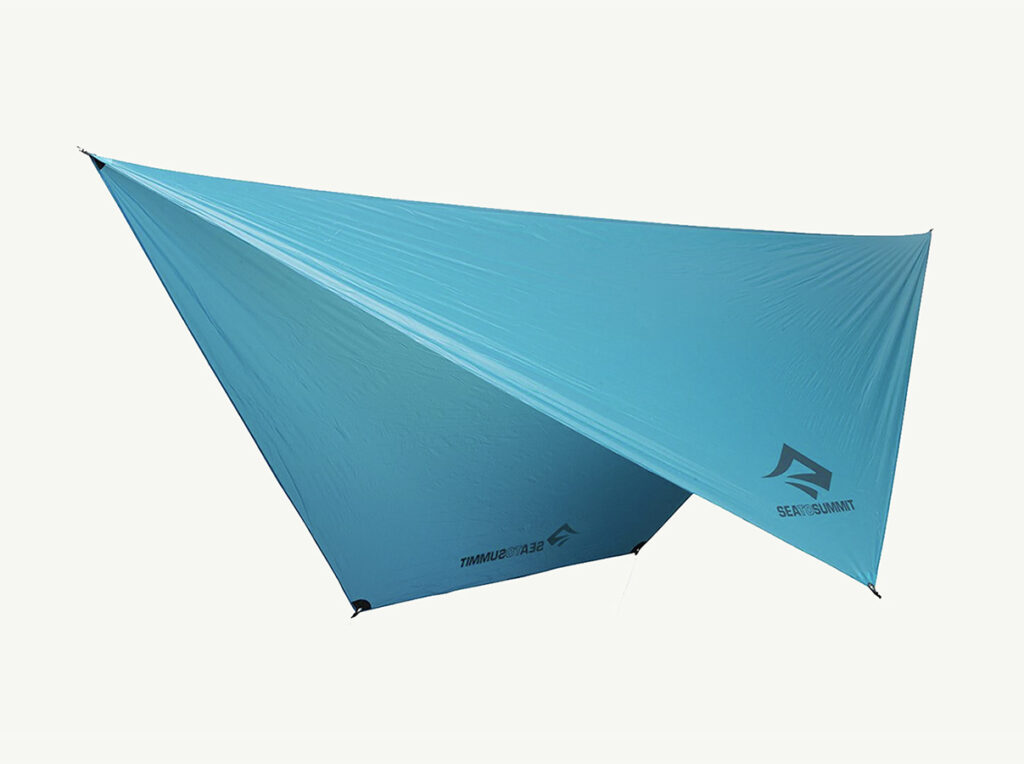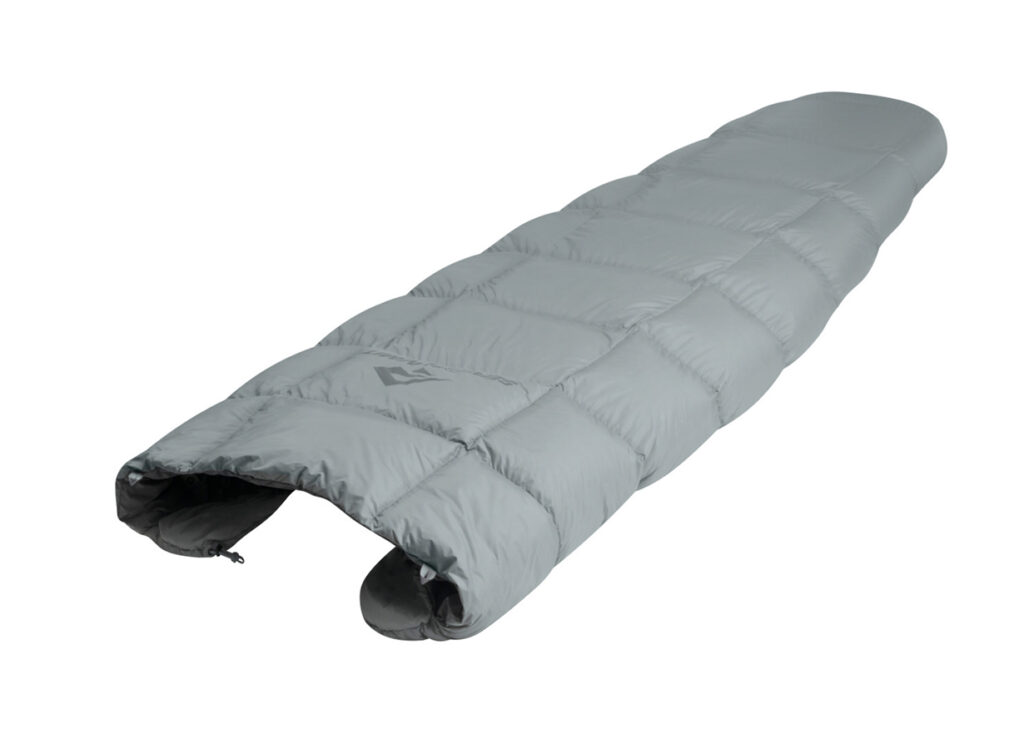Hammock camping basics
Sleep Systems
As hikers grow in their knowledge and ability they will often transition to overnight trips and the default setting for nearly all of us is tent camping. Tents are the familiar and easy option, and for many of us they hark back to family trips or play as children; it’s just something that we understand and connect with. While tents are the most common camping option for hikers, another alternative that’s slowly gaining acceptance is hammock camping.
Hammocks provide a degree of versatility over and above tents and while they won’t suit all circumstances, they may be a viable option for your outdoor adventures. In this article we look at what’s involved in hammock camping including the pros and cons, the gear basics and basic hammock practice to help you decide if this is an option for you.
What is hammock camping?
While most people will understand what a hammock is, when you ask someone to describe one many will look to the backyard or beach hammocks that we lounge around in rather than the more modern technical hammocks used for camping.
Traditionally hammocks require trees to ‘hang’ them and as hikers this is our best bet. Having said that it’s possible to get creative when using hammocks and use vehicles, built structures or even rocks. At a pinch its even possible if you have the right equipment to turn a hammock into a ground tent although that wouldn’t be my first choice.
Today’s modern camping hammocks have a huge array of different components and accessories to suit just about anyone’s needs. It’s possible to purchase hammock kits, to select individual pieces to build your own set or even to make your own if you’re that way inclined. It’s becoming progressively more popular and you can now find hammock equipment easily online and even in some of the larger outdoor stores.
While hammock camping is nowhere near as popular in Australia as it is in the USA – I have never seen a hammock set up on-trail before in Australia, it is gaining popularity.

Beach or backyard hammock

Hammock camping in a purpose built hiking/camping hammock
Advantages
Like any form of camping there are advantages and disadvantages to hanging in a tree. The advantages are:
- Flat, dryish ground isn’t required
- I’ve been on many hikes where I’ve spent time looking for the perfect piece of ground to pitch a tent
- If the ground is wet, setting up a tent can sometimes be a bit awkward
- Keeps you away from most creepy crawlies
- This can also include mice in some areas
- Can double as chair
- Your hammock can be turned into a chair if you feel so inclined
- Many people find sleeping in a hammock more comfortable than sleeping on the ground, or its at least as good
- Potentially faster to set up
- Like anything the more you practice something the easier it becomes
- Leave no trace
- Providing you have nice wide suspension straps and take a bit of care in setting up for the night, your impact on the surrounding landscape can be much less
- Cooler in the summer months
- Can potentially be lighter in weight than tents
- This is dependent on the environmental conditions
- Improved sleep (see article here)
Disadvantages
The disadvantages are:
- As a hiker you need trees
- You may be able to get away without trees for a day or two but if you are ground camping bring a tent
- Colder in the winter months
- You can always compensate with better insulation
- As a generalisation, hammock set ups are heavier (slightly) than tents
- This is dependent on the environmental conditions and the level of warmth you need
- Initial learning curve – its a bit more complex than tents when you first get started
- You may not like the sleeping angle which will vary with the different styles of hammocks
- Hammock camping may not be for you, but you won’t know if you don’t try
- Insulation on the underside of the hammock is even more critical than in tents
- If you are not hiking solo and hiking with someone with a tent, then the end of day discussion is going to have to be a negotiation that suits you both and sometimes that’s a hard ask
Gear basics
As previously mentioned there is a wide array of hammocks and hammock equipment available on the market both here in Australia and in particular in the USA. When you first start out using a hammock try to use existing equipment such as sleeping mats rather than purchasing an under quilt. Once you know that this is an activity you like and are going to do regularly, then it’s time to spend up on getting the gear that suits you. The following is the minimum you need for three-season hammock camping:
- A hammock
- A suspension system to hang the hammock from trees
- Bottom insulation
- Underquilt or
- Sleeping pad
- A rain tarp
- Bug netting
Not essential but worth considering is:
- A ‘door mat’ in the form of a small sheet of plastic that you can rest your feet on when getting into/out of your hammock
- The first time I used a hammock, the area I was in was loaded with burs and a small piece of plastic would have made my life so much easier. Instead I spent a lot of time picking burs of my socks, my shoes and my clothing. Look at making the plastic sheet big enough to sit your pack on as well
- Tree straps
- These broad straps provide an extra level of protection for the trees

Sea to Summit Hammock Pro Double Hammock
This hammock from Australian company Sea to Summit has plenty of space for larger hikers and will also cope with heavier hikers as well. This hammock is designed to be used as part of a kit with Sea to Summit hammock accessories. Make sure whatever hammock you use will cope with your weight

Sea to Summit Hammock Bug Net
Most of the areas I hike and camp in are prone to mosquitos and other bugs during the warmer months of the year. Consider bug netting as essential!

Sea to Summit Hammock Tarp
Unless you are camping in extremely dry conditions that don’t have any condensation or potential for rain, you need to look at a rain trap of some sort. The above tarp from Sea to Summit is designed for hammocks but again if you already have a tarp at home look at using that

Sea to Summit Cinder Cd1 Quilt. While not a dedicated hammock under quilt, this quilt can be easily adapted to perform this function and does it well.
When you sleep on the ground you need to isolate yourself from the ground which will draw the heat from your body and that’s one of the reasons we use sleeping mats. When you sleep in a hammock, you have air movement over your entire body area. When I first tested out hammocks I set it up with an under quilt first and was very toasty (overly actually) in an air temperature of 17° Celsius. When I removed the under quilt, the temperature dropped noticeably. Using just a sleeping bag in the hammock apart from being a challenge is very ineffective because you get almost no warmth from the part of the sleeping bag that you’re lying on

Sea to Summit Ultra Light Insulated Women’s Sleeping Mat
An alternative to an under quilt is a sleeping matt. If you already own one then use this until you decide you want to purchase an under quilt. The advantage of a sleeping mat is that if you need to sleep on the ground you will greatly appreciate having a sleeping mat. When using a sleeping mat in a hammock, you don’t need to inflate it as much as you would when sleeping on the ground

Rumpl Nanoloft Puffy 1 Person Blanket or one of the Sea to Summit Quilts are good options
If you want a challenge, try getting into and out of a fully closed sleeping bag while in a hammock. You don’t need a dedicated quilt like the the two examples above but can use a sleeping bag that opens all the way out if that’s what you have
Basic Hammock practice
Equipment is just one half of the equation when it comes to hammock camping. The other half is the practice of hammock camping and they are both equally important. The following are the key things to consider when setting up a hammock:
- Use what gear you have where possible rather than splurging on a whole new kit
- You can always buy new gear later but have a play with what you have first and decide what is going to suit your needs and budget
- Look up!
- This should be something you do regardless of whether you are using a tent or a hammock. Camping underneath dead trees or branches is unsafe. Always consider the consequences of what would happen if a tree or branch were to fall on you
- In the case of hammock camping, avoid using dead trees to attach your hammock
- Choose a tree that is strong and healthy
- Look for trees around 4.5 metres apart
- 30°degree angle on the suspension
- 30°degrees is the recommended angle of the suspension straps to get the right hang
- Foot end slightly closer to the tree
- This will place the feet slightly higher and stop you sliding down the hammock
- Think of the practicalities
- You need to be able to get in and out of your hammock easily
- I like to be able to swing my legs over the edge of the hammock and have my feet on the ground and for me this is around 60-90 cm off the ground
- You need to be able to get in and out of your hammock easily
- Be considerate of the environment
- Hang as high as you are willing to fall
- In reality there is nothing stopping you from hanging your hammock as high as you like but what happens if your hammock slips or you fall out. Fall from high up and you are likely to do a serious injury
- Look for two trees approximately 4.5 metres apart
- Set the hammock straps approximately 1.8 metres off the ground as a guide
- When you are sleeping in a hammock you aren’t laying along the centre of the hammock but are very slightly offset to give you a ‘flatter more comfortable’ lay (10 to 15 degrees away from the centre line)
- If it looks like rain make sure that your tarp is set up to protect you from the prevailing weather and is low to the ground on that side
Why use a hammock
Hammocks provide a degree of versatility that tents don’t. I usually like to stop walking sometime between 3:00-4:30pm in the afternoon depending on the time of the year but I’ve had several occasions where I’ve had to keep walking well past that time because I was unable to find a suitable patch of ground to pitch a tent. On a number of occasions had I been using a hammock, there would have been plenty of opportunity to stop at my chosen time. This is perhaps the biggest advantage of hammock camping – you can camp on slopes and environments where tents just wouldn’t work.
Final Thoughts
As mentioned previously I have yet to see a hammock in use anywhere in Australia while I’v been out on trail whereas I’ve seen hundreds of tents in use. Given the steadily increasing availability of a range of hammock equipment available both in store and online, usage is definitely on the rise. From a personal perspective I am never likely to go solely over to hammocks and give tents a miss. But I do see the point of them and as someone who solo hikes, I can definitely see myself adding a hammock kit to my hiking kit.